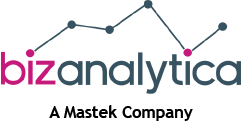
How much is bad data management costing your business?
- Nearly 50% of all software modernization initiatives that fail attribute their demise to cost management.
- Poor data quality costs US businesses an estimated $3 trillion dollars each year.
- Data scientists spend 60% of their time just cleaning and organizing data, rather than developing and analyzing data for usable, actionable information.
Those staggering statistics are from across the country. But what do they mean to your business?
Calculating the cost of bad data to your bottom line is not a simple formula of “how much does it cost to upgrade software” – the impact of both the project execution and the future outcomes are more complex.
So go ahead, calculate the hard costs of hardware and software upgrades, and hiring resources with the right expertise to manage a modernization project. And let’s also take a look at the 5 “softer” costs to your business, which will have a very hard impact if not addressed:
Cost #1: Time your employees spend chasing accurate data
When data isn’t easily accessible to employees inside your organization, significant time is lost. Your teams spend up to 20% of their time chasing data from the ERP and the accounting system, through the CRM and your marketing automation platform, all to get an understanding of your customer’s business in order to provide quality services. Once the data is found, more time is spent compiling it in a centralized format for digestion and distribution. What does 20% of your employees’ time spent in non-strategic, non-revenue generating activities cost your business?
Cost #2: Time your team spends trying to analyze suspect data
Once the data is finally gathered, it still needs to be analyzed and understood. Due to poor data quality, which stems from both poor information being entered into systems as well as the mistakes that occur when manually extracting and calculating data, it is estimated that only 20% of data analytics yield any truly useful business insights. That leaves 80% of what your business collects and stores as useless to supporting your business – an 80% that could be lessened significantly through a strategic modernization of your data infrastructure.
Cost #3: Managing the ever-growing security and compliance concerns
The more technology changes, the more opportunities are born for bad actors, data breaches and business exposure. Cybercrime is expected to spike to over $10 trillion by 2025, and the average cost of a data breach is about $4 million dollars. To mitigate this kind of risk, updates and upgrades to your data infrastructure, as well as ensuring you’re in line with regulatory compliance. When you’re already spending 10-15% more just to maintain your legacy infrastructure – which is estimated to be about 50-60% of your overall IT budget, and then you add the expense of ensuring the latest security measures are also deployed, your budget figures skyrocket. In addition, you face the added risk that some of your legacy products will be sunsetted, and the ability to maintain and upgrade them becomes non-existent.
Cost #4: Executing poorly informed business decisions
We’ve already established that due to data silos, manual extraction and calculation, and inevitable human error, the data you’re using to inform business decisions is suspect at best. And yet we use this data to make revenue-impacting decisions, such as how to manage our credit practices, changes in customer policies and even our marketing outreach. This can have devastating results on customer engagement and satisfaction as well as new customer acquisition – all activities that impact your bottom line. Businesses that get the data strategy right are seeing growth of 30% per year – what could THAT mean to your business?
Cost #5: Satisfaction and engagement with the people who matter most
Your business’ lifeblood hinges on two things: your customers and your employees. The satisfaction and engagement of both these groups is the blossoming or the death knell of your cash flow. Companies with highly engaged employees – employees who have the right tools, training and support available to them – are 22% more profitable. Work drudgery, such as low-value, repeatable tasks that should be automated and cumbersome processes to get the job done are top concerns for employees who value being productive and successful at work.
And your employees’ satisfaction has a direct impact on the happiness of your customers. Your customers also have no desire to wade through cumbersome processes to do business with you, or to find it difficult to access their account data – that is bound to create customer churn in a business environment where we have the tools and technology to offer customers data transparency. But more than that, companies with happy employees have customer loyalty rates over 200% higher than those with disengaged employees. Given the cost to acquire new customers is always exponentially higher than keeping your current ones happy and engaged, this can have tremendous impact on your cash flow as well as your business reputation. A 5% increase in customer retention can have an upwards of 25% positive impact on your bottom line.
What data modernization success can mean to your business
When it comes to being a competitive player in today’s market – regardless of your industry – it’s all about the data. According to Gartner, “By 2023, data literacy will become an explicit and necessary driver of business value, demonstrated by its formal inclusion in over 80% of data and analytics strategies and change management programs.”
The information you’re already collecting about prospects, customers, your employees and your market is invaluable in helping you navigate what is an uncertain and volatile future. Your ability to quickly access data and analyze it in usable, actionable ways will make the difference in your ability to not just survive, but grow during this period of inflation and instability. Organizations that take advantage of data integration tools and modernized data platforms will reduce data delivery time by 30%, and will be able to support 30% more use cases than their competitors. This advantage sets your business apart and makes it an obvious choice for prospects to seek you out, and for customers to continue investing in you.



